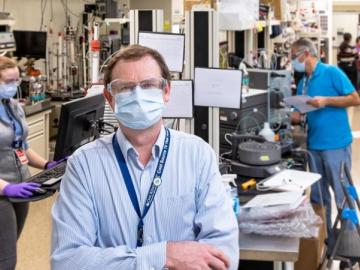
Filter News
Area of Research
- (-) Neutron Science (14)
- Biological Systems (1)
- Biology and Environment (46)
- Computational Biology (1)
- Computer Science (1)
- Electricity and Smart Grid (1)
- Energy Science (44)
- Fusion and Fission (20)
- Fusion Energy (4)
- Isotopes (2)
- Materials (17)
- Materials for Computing (3)
- National Security (19)
- Nuclear Science and Technology (17)
- Quantum information Science (4)
- Supercomputing (32)
News Topics
- (-) Bioenergy (3)
- (-) Clean Water (2)
- (-) Coronavirus (5)
- (-) Machine Learning (3)
- (-) Nuclear Energy (1)
- (-) Quantum Science (1)
- (-) Security (1)
- 3-D Printing/Advanced Manufacturing (3)
- Artificial Intelligence (4)
- Big Data (1)
- Biology (3)
- Biomedical (8)
- Chemical Sciences (2)
- Computer Science (7)
- Energy Storage (2)
- Environment (3)
- Fossil Energy (1)
- High-Performance Computing (1)
- Hydropower (1)
- Materials (5)
- Materials Science (7)
- Mathematics (1)
- Microscopy (1)
- Nanotechnology (2)
- National Security (1)
- Neutron Science (54)
- Physics (1)
- Polymers (1)
- Quantum Computing (1)
- Space Exploration (1)
- Summit (2)
- Transportation (1)
Media Contacts
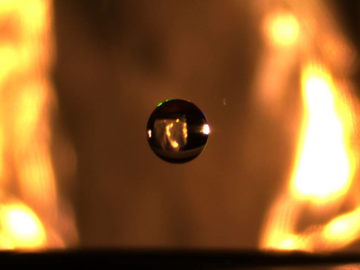
How do you get water to float in midair? With a WAND2, of course. But it’s hardly magic. In fact, it’s a scientific device used by scientists to study matter.

Neutron experiments can take days to complete, requiring researchers to work long shifts to monitor progress and make necessary adjustments. But thanks to advances in artificial intelligence and machine learning, experiments can now be done remotely and in half the time.
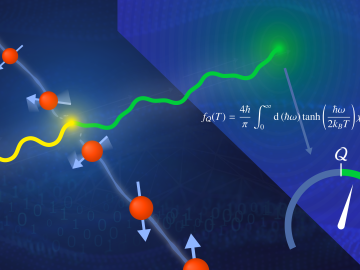
A team led by the U.S. Department of Energy’s Oak Ridge National Laboratory demonstrated the viability of a “quantum entanglement witness” capable of proving the presence of entanglement between magnetic particles, or spins, in a quantum material.
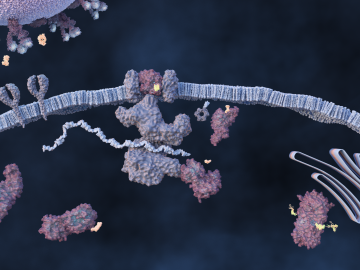
An ORNL-led team comprising researchers from multiple DOE national laboratories is using artificial intelligence and computational screening techniques – in combination with experimental validation – to identify and design five promising drug therapy approaches to target the SARS-CoV-2 virus.
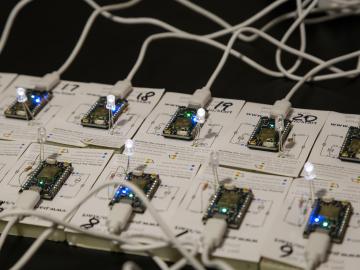
COVID-19 has upended nearly every aspect of our daily lives and forced us all to rethink how we can continue our work in a more physically isolated world.
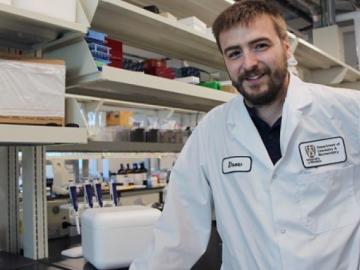
Does vaping and smoking e-cigarettes put you at higher risk of COVID-19 complications? UWindsor’s Drew Marquardt is trying to answer that question with research into how the toxicants in the oils of vapes and e-cigarettes affect lung function.
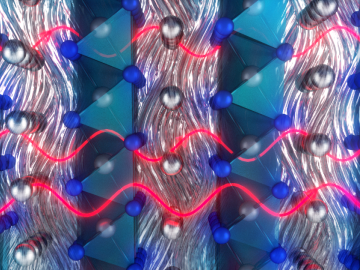
Research by an international team led by Duke University and the Department of Energy’s Oak Ridge National Laboratory scientists could speed the way to safer rechargeable batteries for consumer electronics such as laptops and cellphones.
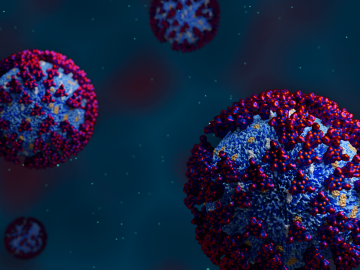
In the race to identify solutions to the COVID-19 pandemic, researchers at the Department of Energy’s Oak Ridge National Laboratory are joining the fight by applying expertise in computational science, advanced manufacturing, data science and neutron science.
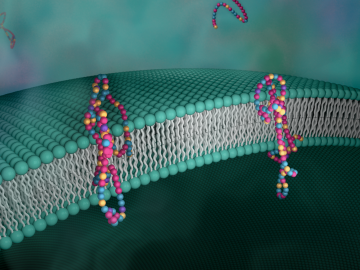
Biological membranes, such as the “walls” of most types of living cells, primarily consist of a double layer of lipids, or “lipid bilayer,” that forms the structure, and a variety of embedded and attached proteins with highly specialized functions, including proteins that rapidly and selectively transport ions and molecules in and out of the cell.



